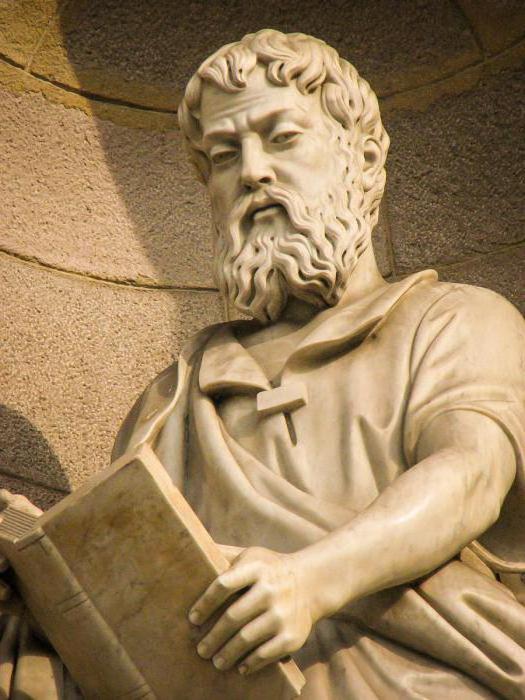The number of professions that appear and disappear at the same time is very large. Most of us do not know now who a joker is, but the term “copywriter” is familiar to almost everyone. In order to deal with the functionality of each profession, people use special literature. And in order to understand what sphere this or that position belongs to, it is necessary to read our material.
Division of professions
In the world community of linguists, it is customary to divide professions according to various criteria, grouping them among themselves in small clusters. Such groups help to identify the same activities and summarize them.

All professions are divided according to various criteria.
By the type of labor, there are classes of professions Gnostic, transformative, and exploratory:
- Converting. Such professions are associated with changes in various properties or conditions of the subject of labor. Cognition in this case is not an end in itself. Bright representatives of this group will be people who work as cooks, bakers, builders. Here, the change in the properties of the original material is clearly traced. A baker from baked goods bakes bakery products, cooks change the properties of raw vegetables and fruits, boiling them in boiling water, builders knead dry cement and leave it to harden. For example, the driver’s profession is not suitable - there is no clear change in properties.
- Gnostic professions (from the ancient Greek word "gnosis", meaning knowledge). These are professions that are associated exclusively with the cognitive industry. Moreover, they organically fit into material production. There are many such professions, and they are very diverse. As a final product, recognition, recognition, control, classification, verification by known signs, sorting, research and evaluation are considered. Representatives include a laboratory assistant, art critic. The medical examiner is also a profession of the Gnostic type.
- Exquisite. In this case, the main focus becomes the search for something, an activity that will help to invent a new one, come up with a solution. Representatives are people whose work is connected with the invention of the new and the transformation of the old. These are educators and educators, programmers, mathematicians, engineers, pattern makers.
Division of labor
By means of labor, professions are divided into:
- Using mechanized tools. These are professions that involve the control of machines or mechanisms in their activities. Such machines are created using manual control to transform something, moving. The classic representatives of such a profession will be a turner or a car driver, who, using control, move goods or shape the workpiece.
- Using hand tools that are necessary to perform the very function of labor. Representatives are locksmiths, cartographers, artists, laboratory assistants.
- Using automated tools. Such professions involve the management of machines, various devices. Workers - operators of incubation units, sound recording operators.
- Functional means of the human body. These are professions in which the main activity is thought and reference. For example, a conductor or an acrobat.

Division of working conditions
According to working conditions, professions are divided by type of work:
- Outdoors - agronomists, tractor drivers, installers. The work involves sudden changes in temperature.
- Household type - accountant, programmer. This work is office or laboratory.
- Unusual - under water, at high altitude, in extreme heat. Representatives - divers, miners.
- With an increased level of moral responsibility - such employees are responsible for human health, his life, and material values. These are teachers, judges, sellers.
Classification of professions
All over the world, it is customary to divide existing professions into specific classes. In Russia, the table compiled by E. A. Klimov is popular.

According to its classification, 5 main types are distinguished:
- Man is a technique. These are people who interact with inanimate objects, most often - technical ones. For example - an electrician, repairman, turner.
- Man is nature. They deal with animals, forests, microorganisms. This is a veterinarian, agronomist, master horticulturist, livestock specialist.
- Man is man. The subject of research, services, and transformation are communities, social strata, groups, people of different ages. Representatives - doctors, teachers, sellers, engineer-educators, guides.
- Man is an artistic image. The representative of this profession sees the world as creative, tries to highlight the beautiful. The environment excites him only in terms of the ability to add beauty, affect the form or emotion. Bright representatives - artists, restorers, tuners, ballet dancers, drama theater, composers, decorators.
Gnostic specialties
Gnostic professions are professions that, as a result of activities, do not produce new products or goods. This is an assessment area. The Gnostic class of professions is often associated with cultural activities and science.
Gnostic professions are not involved in the creation of the new. More often than not, they evaluate available, previously manufactured products or individual parameters.

Bright representatives: merchandiser, art critic, forensic scientist, radiologist.
Case Studies
Each profession combines various attributes that belong to classes, types and types of different directions.
Transformative specialties | Exquisite professions | Gnostic professions | |
H - P | Seed breeder, trainer, breeder | Gardener, milkmaid, veterinarian | Sorter of fish, vegetables, fruits, milk receiver, egg sorter |
H - T | Caster, watchmaker, car mechanic | Crane operator, tractor driver, driver | Observer pilot, sonar, laboratory for mechanical tests |
H - h | Plastic surgeon, psychiatrist, psychologist | Masseur, seller, therapist | Watchman, medical doctor, watchman, investigator, journalist |
H - W | Translator, cutter, cryptographer | Programmer, Linguist, Mathematician | Controller of drawings, accountant-auditor, proofreader, standardizer |
H - x | Florist, artist, writer | Porcelain painter, fashion designer, sculptor | Critic, music controller, antiquarian |
The Gnostic class is called to:
- explore, distinguish, recognize, identify, verify;
- evaluate, understand difficult and complex phenomena, draw conclusions based on various signs of the object);
- check according to previously familiar signs, sort and so on.

Gnostic professions, the list of which is very long - the controller of technical control (technique), the corrector (this is a sign system), the critic (this is an art image), the expert in buildings and structures (this is architecture), the sanitary doctor (the sphere is a person), the laboratory assistant for analysis (this nature), etc., may overlap with other professions and types.
Where does the gnostic type meet?
Gnostic professions, the list of which can be continued indefinitely, can be found anywhere. In the clinic and in the field, at the construction site, and at the factory, in the trading floor of a supermarket or store. Gnostic professions can belong to any of the five common types of professions: the inspector-receiver of manufactured products, critic, proofreader, sanitary doctor.
Transformative professions
The most numerous is the class of professions, which in its goals is actively associated with a change in the properties of objects of labor. That is why this class is called transformative. For such professions, psychologists, compiling a career guidance map, use the abbreviation "Pr" - the first letters of the keyword. This class is the broadest, because often cognitive activity is not the main one, but only stands in front of the transforming one and is a by-product.

Transforming activities should be understood as any actions, as a result of which the subject of labor will change its properties, position in space, and vice versa, will actively maintain its original properties. The class of these professions is widespread in various fields: teacher, carpenter, draftsman, field breeder, restorer.
Exploratory work
Gnostic professions, examples of which are discussed above, are very different from research ones. In the survey class, only the goal of the work is put to the forefront, which implies the invention of something where you need to come up with or define a new solution to the problem. In classifications, it is customary to designate this class with the letter “I”. These are professions of practical application. Often they are confused with the Gnostic, associated with special studies. Gnostic professions, the purpose of which is to recognize and classify, in this context are very different from research. The work of a geologist, for example, often causes controversy among specialists about where to attribute it.
Distinctive features of the Gnostic professions
Gnostic professions, examples of which are given earlier, are characterized by some features that help to isolate them among the general mass. In this class, any of the specialists does not independently participate in the production of new products, but only evaluates the individual ones available. These products are always made by other specialists and cannot occur on their own.
Also, representatives of Gnostic professions can evaluate the individual parameters of a product. A distinctive feature that unites all specialists is a high interest in the properties, attributes of certain objects or products, as well as their comparison.
A variety of Gnostic specialties
Gnostic professions are so diverse that among all of them there is still a separate independent group, united by leading actions that are used to achieve gnostic goals. They include: classification - sorting, testing according to previously known qualities, research - deepening into more complex relationships of hidden, not immediately visible and explicit processes or phenomena.
Employee Requirements
The specialties of this class present certain personal and professional requirements for the employee. The main thing that distinguishes gnostic professions is the purpose of labor. Examples of requirements for an employee: very pronounced cognitive activity, high observation, stability of attention, high level performance, tirelessness and endurance of the necessary sensory organs. Product quality control or property evaluation often affects the interests of others. For an impartial and high-quality study, the strength of the position, the manifestation of integrity in the conclusions made, are important.
Examples
Examples of professions of a gnostic nature are found at every step. Say a cutter who works in an atelier. Each time, starting individual tailoring, he must change his activities, focusing on the figure of the client, the texture of the fabric, the style of the model.

In fact, he solves non-standard and creative tasks throughout the working day. The class of such professions - research - is extremely small.
Intersection of classes and goals
Very rarely, professions in which one type or class predominates are clearly distinguished.There cannot be only Gnostic professions, only exploratory or only transformative ones. Most often, in the work that a person is engaged in, there are several goals: to recognize, to come up with, and to transform. In many specialties, the goal of labor contains two elements, or even each of them. In order to determine the Gnostic or research professions, and assign them to a certain class, you will need to first orient yourself in which of the elements of goals is the main, main content of all activity, and which element has a secondary value.
For example, a doctor, in order to treat a person, must first find out and make a diagnosis. At the beginning of his work, there will certainly be an element of research activity and recognition, but the main content and meaning of all medical specialties is aimed at healing and healing the patient, and therefore - at its transformation.